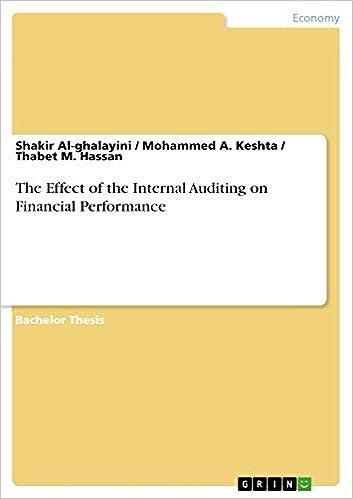1.Assume the following budgeted information for a merchandising company: Budgeted sales (all on credit) for November, December, and January are $258,000, $228,000, and $219,000, respectively.
1.Assume the following budgeted information for a merchandising company: Budgeted sales (all on credit) for November, December, and January are $258,000, $228,000, and $219,000, respectively. Cash collections of credit sales are expected to be 70% in the month of sale and 30% in the month following the sale. The cost of goods sold is always 70% of sales. Each months ending inventory equals 20% of next months cost of goods sold. 40% of each months merchandise purchases are paid in the current month and the remainder is paid in the following month. Monthly selling and administrative expenses that are paid in cash in the month incurred total $30,000. Monthly depreciation expense is $29,500. The expected cash collections from customers in December are:
Multiple Choice $237,000. $225,300. $243,780. $266,900.
2.Assume that the actual amount of one of a companys variable expenses was $45,198. The companys planned level of activity was 19,000 machine-hours, and its actual level of activity was 18,325 machine-hours. The spending variance for this particular expense was $9,114 favorable. The cost formula per machine-hour for this expense is:
Multiple Choice $1.98. $2.90. $2.96. $1.94.
3.Assume a merchandising companys estimated sales for January, February, and March are $119,000, $139,000, and $129,000, respectively. Its cost of goods sold is always 45% of its sales. The company always maintains ending merchandise inventory equal to 20% of next months cost of goods sold. It pays for 20% of its merchandise purchases in the month of the purchase and the remaining 80% in the subsequent month. What is the accounts payable balance at the end of February?
Multiple Choice $12,330 $44,280 $49,320 $45,470
4.Assume the sales budget for April and May is 37,000 units and 39,000 units, respectively. The production budget for the same two months is 34,000 units and 35,000 units, respectively. Each unit of finished goods required 5 pounds of raw materials. The company always maintains raw materials inventory equal to 25% of the following months production needs. If the company pays $2.30 per pound of raw material, then what is the estimated cost of raw material purchases for April?
Multiple Choice
-
$399,475
-
$396,875
-
$393,275
-
$393,875
Step by Step Solution
There are 3 Steps involved in it
Step: 1

See step-by-step solutions with expert insights and AI powered tools for academic success
Step: 2

Step: 3

Ace Your Homework with AI
Get the answers you need in no time with our AI-driven, step-by-step assistance
Get Started


